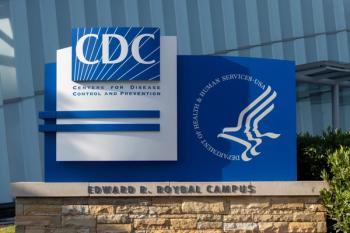
- February 2010 Infectious Disease
- Volume 76
- Issue 2
Counseling Patients with the Difficult Diagnosis of Hepatitis C
Hepatitis C can be a challenging disease for patients. Pharmacists can be instrumental in educating their patients about the pharmacologic agents available for treatment and provide them with valuable resources to successfully manage this condition.
Ms. Terrie is a clinical pharmacy writer based in Haymarket, Virginia.
A diagnosis of hepatitis C can be both overwhelming and challenging for patients. Pharmacists can be instrumental in educating their patients about the pharmacologic agents available for the treatment of hepatitis C, as well as provide them with valuable resources to successfully manage this condition. Hepatitis C can be classified as acute or chronic. Acute hepatitis C virus (HCV) infection is a short-term illness that occurs within the first 6 months after an individual is exposed to the virus.1,2 For most individuals, acute infection leads to chronic infection. Chronic HCV infection is a long-term illness that occurs when the virus remains in an individual’s body and varies in its course and outcome.1,2 Chronic HCV infections can lead to serious liver problems, including cirrhosis and hepatocellular carcinoma.1,2 Approximately 75% to 85% of individuals who become infected with HCV develop chronic hepatitis C.1,2
According to the Centers for Disease Control and Prevention, an estimated 3.2 million to 3.9 million individuals in the United States have chronic HCV infection. Many are asymptomatic or may present with nonspecific symptoms, such as fatigue or malaise in the absence of hepatic synthetic dysfunction. 3-5 An estimated 15% to 20% of HCV cases are acute, whereas chronic HCV accounts for 60% to 70% of hepatitis cases and is considered to be one of the leading causes of chronic liver disease worldwide.2,4,5 Annually in the United States, HCV accounts for 10,000 to 12,000 deaths.2,5,6
Treatment and Management of HCV
At least 6 distinct HCV genotypes (genotypes 1-6) and more than 50 subtypes have been identified.2,5,6 Genotype 1 is the most prevalent HCV genotype in the United States, accounting for about three fourths of the cases.2,5,7 Research has shown that genotyping is useful in epidemiologic studies and in clinical management with regard to predicting the outcome of a response and determining the optimal duration of therapy.7 Treatment goals for hepatitis C should be individualized and based on factors such as the severity of liver disease, the potential for serious adverse effects, the likelihood of treatment response, the presence of comorbid conditions, and the patient’s readiness and willingness to adhere to treatment.2,8
According to the American Association for the Study of Liver Diseases guidelines for HCV, therapy is widely acceptable for patients aged 18 years or older who7,8:
• Are HCV RNA positive in serum
• Have liver biopsy showing chronic hepatitis with significant fibrosis
• Have compensated liver disease • Have acceptable hematologic and biochemical indices (hemoglobin 13 g/dL for men and 12 g/dL for women; neutrophil count 1500/ mm3; and serum creatinine 1.5 mg/ dL)
• Are willing to be treated and to adhere to treatment requirements
In addition, prior to initiating therapy, patients should be screened for possible contraindications for combination therapy, which include pregnancy, decompensated liver disease, history of uncontrolled depression or neuropsychiatric illness, post—solidorgan transplantation, history of autoimmune hepatitis or other autoimmune disorders known to be exacerbated by peginterferon or ribavirin, chronic obstructive pulmonary disease, poorly controlled diabetes, coronary artery disease, severe hypertension, congestive heart failure, untreated thyroid disease, age younger than 2 years, and a known hypersensitivity to any of the agents used to treat HCV.7,8
In general, the goals of treatment for chronic hepatitis C are to decrease the virus to undetectable levels and to slow the progression of the disease to help in preventing cirrhosis, end-stage liver disease, and other possible complications. 7,9 Currently, combination therapy with pegylated interferon and ribavirin is considered the standard of care for the treatment of chronic HCV.6-8 The choice of this drug regimen was based on the results of 3 critical, randomized, clinical trials that showed the superiority of this combination treatment over standard interferon alfa and ribavirin.7 Furthermore, studies show treatment success rates also are now being improved with the addition of polymerase and protease inhibitors to standard pegylated interferon/ribavirin combination therapy.6,8
Currently in the United States, 2 pegylated interferons, which include peginterferon alfa-2b (PegIntron, Schering-Plough Corp) and peginterferon alfa-2a (Pegasys, Hoffmann-La Roche), are approved by the FDA for the treatment of HCV.8
Although these 2 products are considered equivalent with regard to efficacy and safety, they have different dosing regimens. Peginterferon alfa- 2a is given subcutaneously in a fixed dose of 180 mcg/week. Peginterferon alfa-2b is given subcutaneously in a weight-based dose of 1.5 mcg/kg/week for a range of 75 to 150 mcg/week.8-10 Peginterferon alfa-2a is available as an injectable solution in vials and prefilled syringes.9,10 Peginterferon alfa-2b is available in single-use vials of powders for reconstitution and Redipen delivery device.9,10
Patients should be advised not to switch brands of interferon during therapy unless their primary health care provider recommends doing so, because switching brands requires a dosage change.9,10 Patients should be thoroughly educated on the proper subcutaneous injection administration technique and be advised to take medication on the same day at approximately the same time of day each week. After administration, the needle and syringe should be properly disposed of in a puncture-resistant sharps container and be discarded according to instructions given by the primary health care provider.
In general, the duration of treatment for those patients with type 1 genotype is 48 weeks.9-12 Prior to initiation of combination therapy, patients should have both hematology and blood chemistry testing and be routinely monitored throughout therapy.9-12 Dose reduction or discontinuation is recommended in patients experiencing certain adverse reactions or renal dysfunction.9-12
Almost all patients treated with peginterferon and ribavirin experience 1 or more adverse effects during the course of therapy.7 Experiencing adverse effects is a major reason that patients may decline or stop therapy altogether.7 Patients should be encouraged to discuss these adverse effects and their management with their primary health care provider. Examples of the adverse effects associated with therapy include flu-like symptoms— including fever, chills, muscle aches, joint pain, and headaches—fatigue, gastrointestinal upset, diarrhea, thyroid dysfunction, redness or swelling at the site of injection, urticaria, hair loss, insomnia, dehydration, depression, and irritability.9-11
Ribavirin is a synthetic nucleoside analogue with antiviral activity used in combination with interferon for the treatment of chronic hepatitis C.11 Ribavirin monotherapy is not effective for the treatment of hepatitis C and should never be used as single-drug therapy.9,11 The exact mechanism of its action is unknown. It is thought to interfere with the production and/or action of viral DNA and RNA, which are critical to the survival and multiplication of the virus.11 This agent is available in 200-mg capsules and tablets and a 40-mg/mL solution, and is administered twice daily in a dosage based on body weight.
The most common adverse effect associated with ribavirin is hemolytic anemia.11,12 Because ribavirin is cleared by the kidneys, it should be used with extreme caution in patients with renal disease and renal failure.7,11,12 Other adverse effects associated with ribavirin include mild lymphopenia, hyperuricemia, itching, rash, cough, and nasal stuffiness.7,11,12 Patients should be advised to take this agent with food and to adhere to the dosing schedule.
Patients should be advised that ribavirin has teratogenic and embryocidal risks and should not be used by women who are pregnant or by male patients whose partners are pregnant.9,11 Women must have a pregnancy test before starting ribavirin, every month while taking ribavirin, and every month for 6 months after treatment with ribavirin.9-12 The use of this agent is also contraindicated in those with hemoglobinopathies such as sickle cell anemia and thalassemia.9,10
During counseling, pharmacists can provide patients with the necessary information regarding their drug therapy to achieve optimal therapeutic effects, including adhering to the medication schedule, maintaining routine check-ups with their primary health care provider, and encouraging them to discuss any concerns regarding their condition with their primary health care provider. Patients should be informed of the proper administration of prescribed drug therapy, any possible adverse effects associated with their drug therapy, proper dosing, and when to call their physician. To avoid possible drug interactions, patients should talk with their primary health care provider before taking any other medications, including nonprescription medications and nutritional supplements. Patients who experience dizziness, confusion, somnolence, and fatigue should be advised to avoid driving or operating machinery. Patients should be reminded of the importance of adherence to drug therapy, and should be encouraged to take an active role in the management of hepatitis C.
References
1. Hepatitis C Information. Centers for Disease Control and Prevention website. http://www.cdc.gov/hepatitis/C/cFAQ.htm#. Accessed December 1, 2009.
2. Hepatitis C: FAQs for healthcare professionals. Centers for Disease Control and Prevention website. http://www.cdc.gov/hepatitis/HCV/HCVfaq.htm#a1. Accessed December 1, 2009.
3. Hepatitis C Statistics. Centers for Disease Control and Prevention website. http://www.cdc.gov/hepatitis/C/cFAQ.htm#statistics. Accessed December 2, 2009.
4. Hepatitis C Virus Transmission at an Outpatient Hemodialysis Unit—New York, 2001-2008. Centers for Disease ControlMMWR Morb Mortal Wkly Rep. 2009 Mar 6;58(8):189-94.
5. Sandeep Mukherjee, Vinod K Dhawan Hepatitis C. Medscape website. http://emedicine.medscape.com/article/177792-overview Accessed December 4, 2009.
6. Chronic Hepatitis C: Current Disease Management. National Digestive Diseases Information Clearinghouse website. http://digestive.niddk.nih.gov/ddiseases/pubs/chronichepc/index.htm. Accessed December 3, 2009.
7. Ghany MG, Strader DB, Thomas DL, and Seeff LB. Diagnosis, Management and Treatment of Hepatitis C: An Update. American Association for the Study of Liver Diseases website. http://www.aasld.org/practiceguidelines/Documents/Bookmarked%20Practice%20Guidelines/Diagnosis_of_HEP_C_Update.Aug%20_09pdf.pdf.
Accessed December 3, 2009.
8. Management and Treatment of Hepatitis FAQs for healthcare professionals
. Centers for Disease Control and Prevention website.
http://www.cdc.gov/hepatitis/HCV/HCVfaq.htm#a4. Accessed December 3, 2009.
9. PegIntron Prescribing Information. Schering Corporation website. http://www.spfiles.com/pipeg-intron.pdf. Accessed December 4, 2009.
10. Pegasys Prescribing Information. Genetech products website. http://www.gene.com/gene/products/information/pegasys/. Accessed December 5, 2009.
11. Copegus Prescribing Information. Genetech products website. http://www.gene.com/gene/products/information/pegasys/pdf/Copegus_pi.pdf. Accessed December 5, 2009.
12.Rebetol Prescribing Information. Schering Plough website. http://www.spfiles.com/pirebetol.pdf. Accessed December 5, 2009.
Articles in this issue
almost 16 years ago
Waste Not, Want Not: Drug Disposal and the Role of the Pharmacistalmost 16 years ago
Finding the Right Treatment for Managing Your Acnealmost 16 years ago
Women's Health Watchalmost 16 years ago
Infectious Diseases Watchalmost 16 years ago
Diabetes Watchalmost 16 years ago
Asthma Watchalmost 16 years ago
Arthritis Watchalmost 16 years ago
Smartphones: Smart Enough for Pharmacists?almost 16 years ago
Tech Product Newsalmost 16 years ago
Pharmacy Technology NewsNewsletter
Stay informed on drug updates, treatment guidelines, and pharmacy practice trends—subscribe to Pharmacy Times for weekly clinical insights.




















































































































































































































